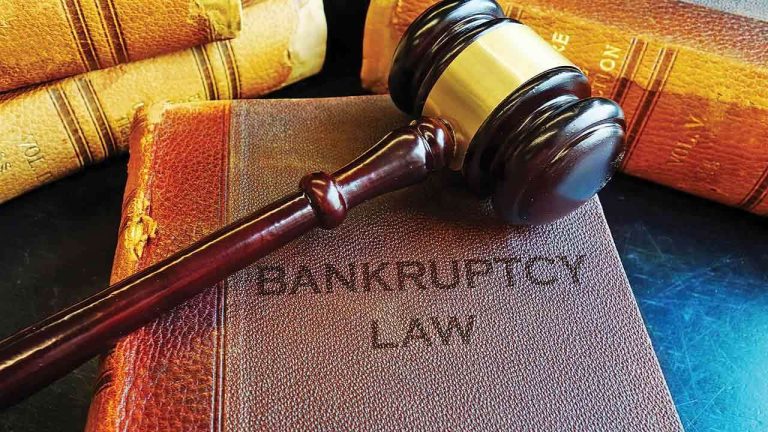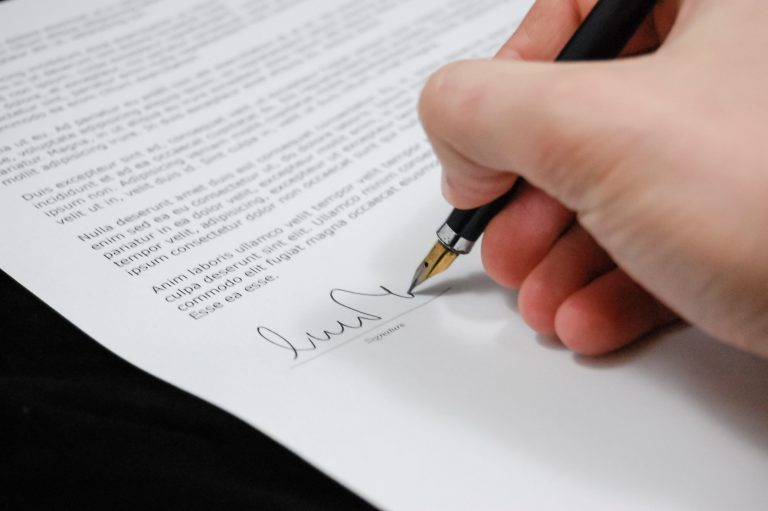Definition and Purpose of Settlements
Mesothelioma settlements result when someone living with this rare cancer reaches an agreement with a company or companies responsible for asbestos exposure. A settlement is basically a deal for compensation, instead of taking things all the way through a full trial. The idea is to avoid the lengthy process of court and reach a decided amount to help with things like medical bills, lost work, and other expenses. For more details about how these agreements work, one can look into a detailed mesothelioma settlement description.
How Claims Differ From Lawsuits
People sometimes confuse “claims” and “lawsuits” when talking about mesothelioma cases. The difference is simple: a claim is a request for compensation or help, often before an actual lawsuit starts. Claims can lead to a settlement on their own or be a step before a lawsuit gets filed in court. Lawsuits, on the other hand, are legal actions that go through the whole court process unless a settlement is reached.
Common Parties Involved in Settlements
There are several groups typically found in these settlement discussions. Usually, the person diagnosed with mesothelioma (or their family if they have passed), is one part. The companies responsible for asbestos exposure—sometimes there are several—are also directly involved. In most situations, insurance companies and legal representatives for both sides join in discussions to help hammer out the details. Common parties include:
- The claimant (the person with mesothelioma or their family)
- Defendants, like manufacturers, employers, or suppliers
- Insurance companies
- Legal professionals on both sides
Everyone involved has a specific role, and the negotiations can move fast or slow depending on how many companies are part of the discussion. Resources from experienced asbestos litigation firms can help guide families through this complex process.
Eligibility Criteria for Mesothelioma Settlement Claims
Most people want to know right away if they qualify for a mesothelioma settlement claim. Meeting the right criteria is the first step, and it isn’t always easy to figure out. Here’s what needs to be in place before moving forward:
Determining Occupational Exposure
This step is mostly about showing how someone came into contact with asbestos. It’s necessary to have a clear history of working with, or around, asbestos-containing materials. Here are some typical ways people prove occupational exposure:
- Employment records from jobs known for asbestos risk (like shipyards, construction, or manufacturing)
- Coworker statements or union records connecting your job to asbestos use
- Evidence of asbestos at worksites, such as company memos or purchase orders for materials
Proving Medical Diagnosis and Causation
For a settlement claim, having documented proof of a mesothelioma diagnosis is non-negotiable. Doctors usually need to confirm that mesothelioma is present and tie it back to asbestos exposure. This usually means:
- Medical records or pathology reports showing mesothelioma
- Doctor’s notes explaining the causation—how asbestos likely played a role
- Expert statements from medical professionals
Understanding how the disease progresses is also crucial. Learning about mesothelioma metastasis and spread can help explain the connection between exposure and advanced disease stages.
Time Limits and Statutes of Limitations
Every state sets its own deadline for filing a claim, known as the statute of limitations. Missing this window can mean losing the right to seek a settlement. Pay attention to:
- When the statute starts—usually at diagnosis or sometimes when exposure was discovered
- How different rules may apply for wrongful death claims (filed by loved ones)
- The length of the statute, often ranging from one to three years
Anyone considering a claim should start gathering their personal and work evidence as soon as possible. Early action helps make sure important documents aren’t lost, and the clock doesn’t run out.
The Mesothelioma Settlement Claims Process
Getting a mesothelioma settlement can feel complicated, especially for someone dealing with sickness and stress. Here’s a look at the steps most claims go through, from the first meeting with a lawyer to negotiations over money. Knowing what lies ahead helps victims and families prepare for what’s next.
Initial Legal Consultation and Case Review
- The process starts with a meeting between the mesothelioma patient (or family) and a lawyer who knows about asbestos claims.
- This first talk is usually free and allows the lawyer to ask questions about the person’s work and health history.
- The attorney gives feedback about whether there’s a good case. Sometimes, they’ll suggest other options if a settlement doesn’t look likely.
Gathering Medical and Work History Evidence
- To be taken seriously, claimants must pull together detailed medical records proving a mesothelioma diagnosis.
- Work records and details about asbestos exposure locations are key. Legal teams may reach out to old employers or unions for help.
- Sometimes, lawyers will also track down coworkers or witnesses from decades ago to show exposure.
Negotiating With Responsible Parties
- Once the facts are organized, the attorneys reach out to the companies or asbestos trust funds that might owe money.
- There can be a lot of back and forth—each side may present arguments and look for ways to settle rather than going to court.
- The goal is to agree on an amount that covers medical costs, lost income, and pain and suffering, often without the hassle of a trial.
Most people never expected to face these steps. Every claim is different, but with the right help, many families find settlements that help cover what they need.
Factors That Influence Settlement Values
Settlement values for mesothelioma claims can shift a lot from one case to another. Several key factors play a part in the final settlement amount someone might get. Understanding what goes into these numbers can help victims and their families know what to expect.
Severity of Illness and Treatment Costs
One of the most direct things influencing a settlement is how sick the person is and what kind of care they need. The usual considerations are:
- The diagnosis stage for mesothelioma
- Medical treatments received, such as surgeries, chemotherapy, or long-term care
- The impact of the illness on day-to-day living
Cases involving advanced cancer or higher medical expenses often bring a higher offer. For an idea of what’s possible, average mesothelioma case settlements in 2025 often range from $1 million to $1.4 million—though it really depends on circumstances.
Financial Loss and Non-Economic Damages
Settlement calculations include not just obvious expenses, like hospital bills, but also less direct losses. Most claims consider:
- Lost wages and future earning potential
- Costs for other support, like in-home care or travel for treatment
- Non-economic damages, including pain and suffering or loss of companionship
The more these disruptions affect the person’s life and family, the higher settlements can trend.
Liability and Strength of Evidence
If the case clearly shows which companies are at fault, the settlement goes more smoothly. That’s because it’s harder for defendants to deny their responsibility. Consider:
- How well exposure to asbestos can be documented
- The availability of solid witness statements or records
- The number of defendants and how each one tries to shift the blame
Stronger evidence usually means quicker and larger settlements. Past success stories, like those documented in proven case results, show how thorough evidence collection can lead to significant compensation for victims and their families.
Common Challenges in Mesothelioma Settlement Claims
Bringing a mesothelioma settlement claim is never simple. There are several obstacles that victims and their families might not expect at first. Each case can present unique problems that make the process slower or more complicated. Here are some of the most common issues:
Delayed Diagnoses and Its Legal Impact
Mesothelioma can take years, sometimes even decades, before it shows any clear symptoms. This long gap between exposure and diagnosis leads to several problems:
- Doctors often misdiagnose mesothelioma, delaying proper treatment and legal action.
- The time lag makes it harder to connect current health issues to asbestos exposure years earlier.
- Some victims may run out of time to file, as statutes of limitations still apply regardless of how much time has passed between exposure and diagnosis.
Multiple Defendant Complications
Usually, more than one company is responsible for a victim’s asbestos exposure over the years. Unpacking who is liable can take a while. Problems in these cases include:
- Sorting out which companies supplied or used asbestos-containing materials at different jobsites.
- Old records might be missing or incomplete, adding more delays.
- Each company’s lawyers might try to blame the others, slowing down or blocking settlements.
For a sense of the variation, average mesothelioma lawsuit settlements in 2025 can vary widely depending on how many parties are involved and how much each party is held responsible.
Issues With Locating Historical Asbestos Exposure
Going back through decades of work or residence history is tough.
- Victims often need to remember specific details about jobs held years or decades ago.
- Helpful evidence—like hardware receipts, old pay stubs, or union records—may be impossible to find.
- Witnesses or coworkers who could confirm exposure might be unavailable or have passed away.
Even with these issues, persistence and legal support can help victims track down the right information to keep their claim moving. Each hurdle is difficult, but not impossible to overcome with the right help.
Choosing Legal Representation for Settlement Claims
Deciding who will represent you in a mesothelioma settlement claim is a significant step. The lawyer or firm you pick can have a serious impact on how your claim turns out. With so many choices, it’s not always easy to know what matters most when selecting legal help. Here’s what to keep in mind.
Advantages of Specialized Mesothelioma Attorneys
Not every lawyer is the same, and mesothelioma cases require a particular kind of skill. You want someone who has handled these claims before, who understands what’s at stake, and who is comfortable dealing with asbestos companies. Some of the key benefits include:
- Familiarity with asbestos exposure histories and work records
- Ability to track down hard-to-find evidence
- Knowledge about typical settlement amounts and negotiation styles
- Comfort working alongside medical professionals to build a strong case
Choosing a team with this specific background can save a lot of time and trouble throughout the process. Researching experienced law firms is a good place to start if you’re unsure.
Fee Structures and Payment Options
Legal fees come in a few varieties, but most mesothelioma lawyers work on something called a contingency basis. This means you do not pay anything up front. They get paid a percentage of the settlement only if you win. Here are a few things people often want to know:
- What percentage does the lawyer take from the settlement?
- Are there separate costs for filing or gathering records?
- If the claim fails, what (if any) costs are owed?
Always double check what’s written in your agreement, so you know what to expect.
Evaluating Attorney Experience and Reputation
You want a lawyer who actually gets results. It’s a good idea to:
- Ask for examples of similar cases they’ve handled
- Look for awards, testimonials, and reviews from previous clients
- Check with state bar associations for any complaints
An experienced lawyer will share their track record openly and help you feel more at ease during what can be a stressful time. In places such as Ontario, an experienced lawyer can assist with strategic claim filing and navigating local regulations.
Picking legal representation is more than just hiring someone—it’s about trusting a professional to steer your case with your best interests in mind.
What to Expect After a Mesothelioma Settlement
Once a mesothelioma settlement is reached, many people are left wondering what happens next. Getting the compensation is a big step, but there are several important things victims and their families should keep in mind after the agreement. Here’s what comes up after a settlement has been finalized:
Payment Distribution and Timelines
The way the funds are handed out depends on the agreement and the number of parties involved. Usually, payment details are in the settlement documents:
- Payments might be made as a single lump sum (all at once) or split up over time.
- Delays can happen. Insurance companies, court processing, or even missing paperwork might slow things down.
- It’s standard for attorneys to receive their portion first, and then the remaining funds are sent to the claimant.
If there are multiple defendants involved, each may pay separately, so it’s normal for checks to arrive at different times.
Tax Implications of Settlements
Most mesothelioma settlements are not considered taxable as income by the IRS if they are compensation for physical injury or illness. That said, there are exceptions:
- Punitive damages (money meant to punish, not compensate) are generally taxed.
- Interest earned on the settlement funds is taxable.
- Consult a qualified tax advisor to make sure nothing is overlooked.
Understanding the possible financial effects helps families plan carefully for the future, and those who want more details might find it helpful to look at the latest updates on talcum powder lawsuit settlements, which often face similar tax questions.
Ongoing Support for Victims and Families
A settlement brings some closure, but for many families, the journey isn’t over. Even after the legal part, ongoing support is important:
- Access to medical care or specialized treatments for mesothelioma.
- Emotional support through counseling, support groups, or community resources.
- Practical help, such as financial planning or support for navigating new expenses.
If any questions or problems crop up later, most experienced law firms are willing to advise clients even after the case is closed.
In short, reaching a settlement is just one stage. Knowing what comes next makes the process feel more manageable and helps families use their compensation in ways that really matter.
Finding Local Legal Help and Additional Resources
When searching for legal representation for a mesothelioma settlement claim, location can matter. Finding lawyers who understand local laws and have experience in your area can make the process smoother. Beyond just legal help, there are also educational resources and support programs available to victims and their families.
Locating Attorneys in Your Area
While many mesothelioma lawyers can work across state lines, having someone familiar with your state’s specific regulations and court systems can be beneficial. For example, those in the Gulf Coast region might want to connect with mesothelioma lawyers in Mobile, Alabama who understand local workplace exposure patterns and state-specific filing requirements.
When searching for local representation, consider:
- Attorneys with a track record of cases in your state
- Law firms with offices nearby for easier in-person meetings
- Lawyers familiar with local industries where asbestos exposure was common
Educational Support and Scholarship Programs
Some law firms and advocacy organizations go beyond legal representation to support the mesothelioma community in other ways. For instance, mesothelioma scholarship programs help students affected by this disease—whether they’re patients themselves or family members—pursue their educational goals despite the challenges they face.
These programs demonstrate a commitment to the mesothelioma community that extends beyond the courtroom, offering hope and opportunity during difficult times.
Building a Support Network
Navigating a mesothelioma settlement claim is easier with the right support system in place:
- Connect with patient advocacy groups that can answer questions and provide resources
- Join support groups where you can learn from others who have gone through similar experiences
- Work with law firms that offer comprehensive support throughout the entire process
Remember, the right legal team will not only fight for your settlement but also help connect you with the resources you need to manage all aspects of living with mesothelioma.





